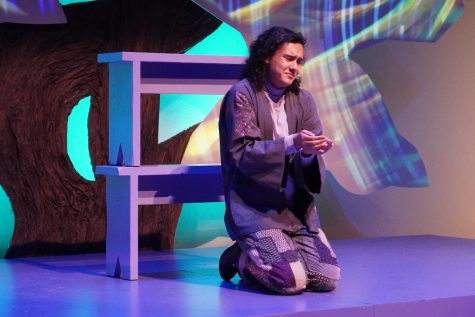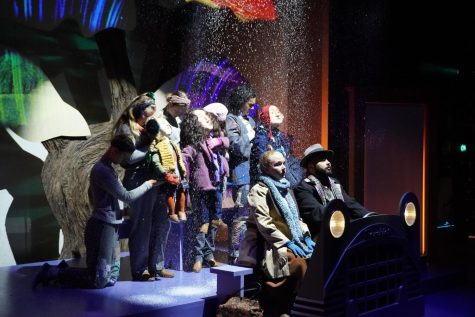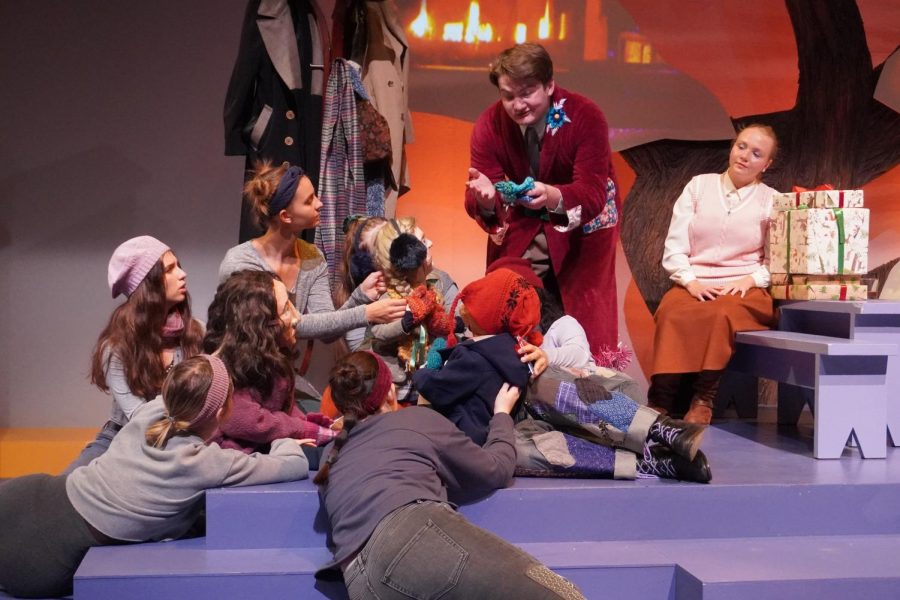On Sept. 24, “The Long Christmas Ride Home,” was showcased at the Don Powell Theatre, courtesy of San Diego State University’s theater department. The play, written by Paula Vogel and directed by Dr. Katie B. Turner captivated the audience by breaking the norms of a typical Christmas story. Themes such as depression, suicide, and complicated family issues made it stand out among the rest.
The synopsis is about a family that experiences broken marriages, mixed religions, physical abuse, and feelings of lust. The setting takes place around Christmas time with foreshadowing from childhood to adulthood. An experimental play where, as Turner said, “we are all in some way affected by our past experiences that influence our present in some way, and which may continue to resonate into the future.”
Overall, this was an extremely tantalizing tale that left the audience craving for more and wanting to dig further into the story. The use of a Japanese form of storytelling–“Bunraku”, really helped engage the audience by showing that emotions rely more on movements rather than facial expressions.
The show was enhanced by rhythmic dances that left no part of the stage empty. The lighting conveyed serious emotions related to adultery and LGBTQ+ issues, which were other themes that were incorporated into the play.

At one point, Steven, played by third-year Nathan Moore, was shown to express his thoughts on death and the idea of a final breath being exhaled. It was nearly a spoken word performance due to the utter beautiful and emotional display of the character’s struggles with being a gay man.
When the lighting had dimmed to a soft gray, the passion leaked from his voice as though he was speaking to each member of the audience individually. Moore was gifted with being able to draw the audience into the play, rather than to merely watch it seats away. Addressing the issue of homophobia and personalizing it resonated with the audience who clapped ferociously at the end of the performance.
Another nod to traditional Japanese artistry featured an intense episodic dance between Nathan Moore and Milo Mee, a second-year student at SDSU. The elements of Japanese culture were shown tastefully within an hour and a half of an American play. As a whole, it was an experience that must occur in-person and cannot be recreated with mere words.
Turner did an excellent job in commandeering the play, and every actor played a part that truly allowed it all to blend seamlessly with each other.

While the plot can lead to many questions and late-night pondering, the dark themes really represented the idea of Wabi-Sabi; the beauty of simpleness and modesty as the play’s co-dramaturg, Aika Tsuda, put it. A production everyone should see, and one that will certainly give the viewer a new perspective on their life as both an innocent child and a maturing adult.









